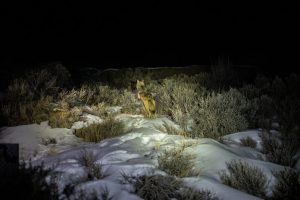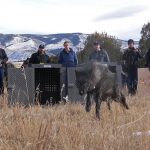Bringing recovery back to the Endangered Species Act
While a name change for the Endangered Species Act may be primarily symbolic, two Wyoming lawmakers who call the change long overdue, have introduced a bill to rename the program the Endangered Species Recovery Act.
Arkansas Republican Rep. Bruce Westerman, the chair of the House Committee on Natural Resources, compared the Endangered Species Act to the Hotel California, where “you can check out any time you like, but you can never leave.” Now, Wyoming Republicans Cynthia Lummis and Harriet Hageman want to rename the ESA the Endangered Species Recovery Act, bringing to the forefront the Act’s intention to delist recovered species.
Since its inception in the 1970s, only 54 species of the1,300 species listed have been removed from the ESA citing recovery.
In a statement sent to Western Ag Network, Hageman said, “For too long, the Endangered Species Act has been used to control land, not recover species, with only 3% ever delisted. The Endangered Species Recovery Act, which I introduced with Sen. Lummis, reiterates the law’s true intent, actually recovering wildlife and returning management to the states. Wyoming leads in conservation, and it is time Washington stepped aside. We must put results over regulation and bring common sense back to environmental policy.”
REFOCUS
Lummis said the name change is a call for refocus and to better reflect the intent of the act, something she said Washington bureaucrats have lost sight of since the law was passed in 1973.
“Instead of celebrating recovery success by removing federal intervention, they’ve created a system that keeps species listed indefinitely. The Endangered Species Recovery Act refocuses this law on its original purpose: recovering species and then getting the federal government out of the way,” Lummis said.
Lummis said states like Wyoming have proven track records in wildlife management and when species recover, appropriate local management should resume.
“The ultimate goal of federally listing a species as endangered or threatened has always been the recovery of that species to a level where the species is no longer imperiled and can thrive without the need of federal protections,” said Judy Camuso, commissioner of the Maine Department of Inland Fisheries and Wildlife and President of the Association of Fish & Wildlife Agencies. “Successfully recovering and delisting species allows limited resources to be focused on the species most in need of attention.
According to Angi Bruce, director of Wyoming Game and Fish, changing the name sets the state for emphasizing future work on recovery.
“The Endangered Species Act is a remarkable law that was created to protect and recover species,” said Angi Bruce, Director of Wyoming Game and Fish. “While this landmark act has primarily focused on species protection over the past 50 years, this revision in the name of the act is necessary to refocus how we think about listed species and better reflect its original intent. Changing the name sets the stage for emphasizing future work on recovery.”
She said with over 1600 species listed, now is the time to focus on actions needed for delisting.
Sens. John Barrasso, R-Wyo., Pete Ricketts, R-Neb., Mike Crapo, R-Idaho, and Jim Risch, R-Idaho, are Senate cosponsors.
Many producers across the West are relieved by the recent confirmation of Wyoming’s Brian Nesvick as the Director of the U.S. Fish and Wildlife Service and are watching closely for news on potential delisting of gray wolves and grizzly bears.








